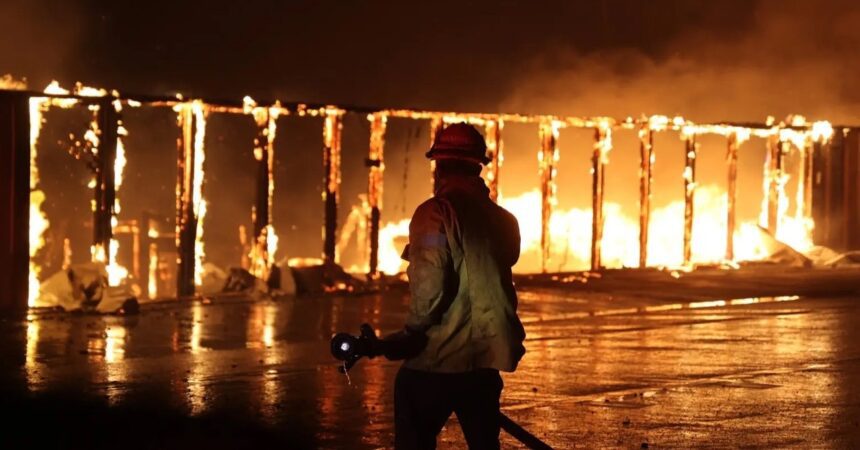Karen Short, a research ecologist with the Forest Service who played a key role in the study and oversees a historical database of national wildfire reports, emphasizes the importance of understanding the causes of wildfires for the purpose of prevention and public education. Evidence suggests that proactive measures are effective: The National Fire Protection Association reports that house fires in the United States have declined by almost 50% since the 1980s.
In 2024, Short broadened her archive on wildfires to include additional data that could aid investigations, such as weather conditions, elevation, population density, and the timing of a fire. “It’s vital to have those factors recorded to monitor trends over time. We continue to track data dating back to the 1900s,” she stated.
Short notes that wildfire patterns in the western United States have evolved due to human influence. In recent years, ignitions caused by power lines, fireworks, and firearms have increased, unlike the earlier occurrences linked to railroads and sawmills.
The research identified vehicles and equipment as the leading cause of wildfires, potentially responsible for 21 percent of incidents without a known cause since 1992. A recent example is the Airport Fire in California, which ignited last autumn and scorched over 23,000 acres. Additionally, an increasing number of fires have resulted from arson and accidental ignitions—such as smoking, gunfire, or campfires—accounting for another 18 percent. Notably, in 2017, a couple’s choice of a blue smoke-producing firework for a gender reveal celebration triggered the Sawmill Fire, ravaging nearly 47,000 acres.
However, these findings are not conclusive. The machine-learning models employed in the study are designed to estimate the likelihood of a fire’s cause rather than definitively prove how a fire started. While the model demonstrated 90 percent accuracy in distinguishing between lightning strikes and human activity as ignition sources in tested cases with known causes, it struggled to pinpoint which of the 11 possible human actions were responsible, achieving correct identifications only half the time.
Yavar Pourmohamad, a PhD researcher in data science at Boise State University and the study’s lead, believes that understanding the likely causes of fires can assist authorities in alerting individuals in high-risk areas before wildfires ignite. “This information could inform people about the key behaviors to be cautious of,” he explained. “In the future, AI may evolve into a reliable tool for practical applications.”
Synolakis, a professor at USC, emphasizes the significance of Pourmohamad and Short’s findings in understanding the evolving risks. He advocates for preemptive strategies, such as burying power lines to protect them from wind damage.
A 2018 study highlighted a rise in fires caused by downed power lines—such as the Camp Fire in Paradise, California that same year. While the authors noted that power lines are not linked to a significant number of fires, they tend to correspond with larger areas of land burned.
“We must ensure our communities are more resilient to the impacts of climate change,” Synolakis affirmed. “As we’re witnessing with the severe conditions in Los Angeles, fire suppression alone isn’t sufficient.”










